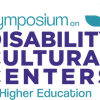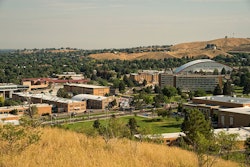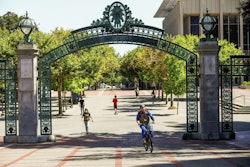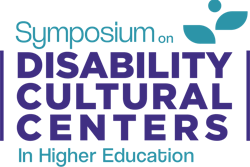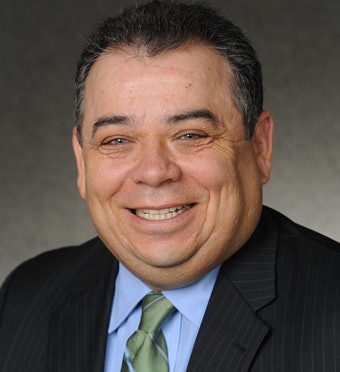 Raul Cardenas is the associate vice chancellor for student affairs at the University of Colorado-Denver.
Raul Cardenas is the associate vice chancellor for student affairs at the University of Colorado-Denver.Last year Ricky Adams signed up for an ancient philosophy class at Marshall University and soon found himself struggling. Adams, a native of Centreville, Va., is learning disabled. He suffers from ADHD, has problems with reading, writing and comprehension and doesn’t test very well. Without plenty of additional assistance, he knew he was doomed to flunk the class.
So he turned to his one refuge at Marshall: the Marshall University Higher Education for Learning Problems Center, more commonly known on the Huntington, W.Va. campus as the HELP Center. The center, a nonprofit, fee-based program, provides services for the learning disabled. With the help of 10 full-time professional staff and 70 tutors, it provides assistance to more than 200 students like Adams.
“I had the best tutor who was behind me 100 percent,” says Adams, a junior majoring in physical education. “She took the time to help me out of her personal time. Without her I wouldn’t have passed the class. I got a B in the class. I had no idea what I was doing. But she believed in me.”
Adams expects to graduate in 2014. Without the center, he says, he’s not sure if he would have made it this far.
Universities like Marshall, the University of Arizona and the University of Connecticut have gained reputations as institutions that go way beyond the requirements of the Americans with Disabilities Act by offering customized instruction and extra services to learning disabled students to succeed in the classroom and in other arenas like residence halls.
But schools with these kinds of services are in the minority.
“Even though we’re entering 2013 very soon, many colleges still don’t have the kind of support these individuals need,” says Kristina Pollard, director of Marshall University’s HELP center.
She adds, “I think what it takes is a true background in how to understand working with students with learning disabilities and being able to take that risk.”
Taking the risk, she says, involves a lot of planning. “You have to consider funding and staffing needs,” she says. “We have to fundraise and do community outreach.
There’s a lot of legwork behind the scenes to help the center grow. There’s a lot to helping run the center, but it can be done.”
Reaching Out
Although a growing number of children are being diagnosed with mental and emotional disorders that prevent them from succeeding in college, such as autism, ADD and ADHD, few colleges have created programs that provide them the help they need to make it in the classroom.
Many university officials point out that students are not required to report that they have disabilities. For every student who reports, they say, there’s probably another one who doesn’t. Some university officials say that in most incoming freshman classes, the percentage of students with some kind of learning disability is about 10 percent.
Some college officials attribute these low numbers in reporting to the stigma attached to learning disabilities. They attribute the low numbers of colleges and universities with extensive resources for the learning disabled to funding and the large amount of work involved in catering to this population.
The few colleges that do have such expanded programs for students with learning or emotional problems and disabilities are experiencing a huge demand. They include colleges such as Marshall, the University of Arizona and the University of Connecticut. These schools provide tutoring, mentoring, social activities and teach living skills to these students. For the few dozen colleges that have these programs, it’s been a useful recruiting and retention tool.
Pollard says her office works closely with Marshall’s recruitment division, for example, to help attract new students to the university.
“We provide materials about our services to them,” she says. “When we are in learning disabled arenas recruiting for the university, we try to be aligned. We attend a lot of conferences. When we are promoting our center, we are also promoting the university. At college fairs and at different high schools, [the recruitment team] promotes our programs as well.”
At the University of Connecticut, the Center for Students with Disabilities works with about 1,200 students. Of these, 257 have ADD or ADHD and 52 have Asperger’s syndrome or autism, according to assistant director Christine Wenzel. The university now has six programs that go beyond what the law requires. The first program began in 2008 with one student; the six programs combined now have more than 250 students.
Wenzel says part of the impetus for the creation of these programs stemmed from the fact that while there were required programs for K–12 students, there was little or nothing in place for disabled college students that went above the requirements of the ADA. So the center strives to provide academic and residential services to meet the needs of students with disabilities and to help level the academic playing field in the process.
Wenzel says that retention numbers of students registered with the center are consistent with those of the larger university body.
“We ran our retention numbers last year,” she says. “Overall, our retention rate with students with disabilities is 92 percent. We only had five or six students that left, and that was not because of academic problems.”
She says the center’s work has helped position the university as a leader in working with students with disabilities.
“We’ve gotten a lot of recognition as a result of this program,” she says, adding that she’s appeared on ABC’s “Good Morning America” and that national publications such as the Huffington Post have written stories about the program. “We present at conferences all the time. Other institutions want to use us as a model. It has put us more on the map.”
Best Practices
Rudy Molina, interim director of the University of Arizona’s renowned Strategic Alternative Learning Techniques (SALT) Center, which began in the 1980-81 school year by offering services to three learning disabled students and now caters to more than 500 each semester, says SALT is an important draw to students with learning disabilities.
“The vast majority of students who come to the SALT Center tell us the reason they’re here on this campus is because of the center,” Molina says of a survey the center conducts each year.
He says the center’s retention rate matches that of the university’s larger population.
“Part of our objective here and the reason why we are on the campus is because we contribute to the overall retention of University of Arizona students,” he says. “We are up there with the five- or six-year retention rate with the rest of the university. … We are extremely proud of the fact that students enrolled in [the] SALT Center are graduating and being retained. Our students now have the opportunity to be not only successful at the college level, but to pursue the careers they always dreamed of.”
Some schools, such as the University of Colorado-Denver, that don’t have vast programs for students with learning disabilities are trying to come up with creative solutions to help retain them. Dr. Raul Cardenas, associate vice chancellor for student affairs at the University of Colorado-Denver, says that in the last year, the university has begun an outreach program to all faculty members.
“Our faculty see students more than anybody else,” says Cardenas. “We’re reaching out and providing them with the necessary information and tools. Our goal is to continue to meet continuously with groups of faculty to talk about students with different types of challenges. We’ve been able to increase the awareness of faculty and increase [the] number of referrals.”
While it’s too early to demonstrate impact, he says, since launching the faculty outreach initiative, visits to the counseling and disability outreach center have increased by at least 10 percent.
“From my retention perspective, the more they access services, the more apt they are to continue,” he says. “Students that are less engaged are the ones we, as a university, tend to lose.
“In my 25-plus years in higher education, the number of students with mental or emotional issues has dramatically increased. We don’t know what the cause is; we just know we need to help identify them. The longer we go at not identifying them, the less likely they will receive treatment.”




